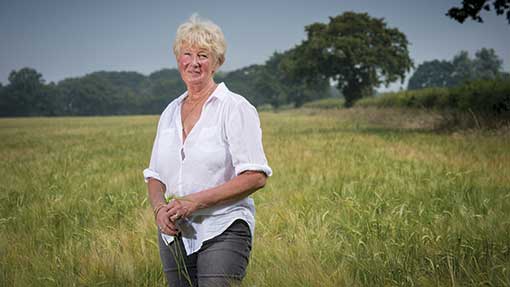OPINION: Pigeon war sparks scarecrow mystery

The sartorially dressed scarecrow is not a feature of this farm.
Work clothes must be completely past my resurrection skills before they are committed to the fields to protect spring crops. John favours the distressed look that battery acid, spot weld, grease, oil and barbed wire lends to a working garment, and they must be truly disreputable before being consigned to the scarecrow dressing-up box.
Once in there, old boiler suits are top favourites for bird-scaring construction. Being one piece, they are so much easier to fill with straw. Stuffing trousers and shirt separately and then trying to keep your scarecrow together without apparently disembowelling him is a tricky business.
We find that positioning and stance of the deterrents is more important, fortunately, than what they are wearing. John favours that one at least should sport a mock shotgun. This particular scarecrow has to be moved every few days as the pigeons soon cotton on to the reality of the marksman. Clothes that flap in the wind, rustle or have strips of reflective tape attached also add to the ability of the bird-scarer to disturb a jumpy pigeon. In the field, scarecrows lead a solitary life. Not a job for the extrovert, shunned as they are by beasts and birds. But a neighbour’s scarecrows recently attracted a high degree of passing interest as his security squad proved to be too well dressed for the simple task of frightening off vermin.
All weekend our neighbour had worked on assembling and kitting out a group of scarecrows for his spring-sown fields – dressing them in outdated rather than outworn garments. Tuesday morning dawned and one of the sentries was just a wooden crossbar surrounded by a pile of straw and very little else. The following morning was a repeat story. Another disgraced, disrobed and forlorn arable guardian.
The plot thickened with our neighbour when he inspected the field that evening to find that there was no sign of the scarecrow at all. It had been bad enough that a passer-by had taken all the apparel, but to actually take the scarecrow as well was just too much. I certainly couldn’t imagine our scarecrows ever suffering the ignominious fate of being robbed of their dignity, garments and effectiveness by fashion-conscious people; if they did, they must be desperate and are certainly welcome to them.
The mystery was solved when, stomping out into the field to search for footprints or tyre tracks, our neighbour discovered a smouldering heap of ashes where the scarecrow’s pole had been stuck in.
See also: Bobbi Mothersdale: Canal boat’s perfect for farm spotting
Turns out that to add a little zest to his anti-pigeon armoury, he had hung a string of day rope bangers onto the arm of his remaining, fully dressed deterrent. He had lit the bangers that morning, leaving the rope to slowly smoulder and activate each banger in turn. And it seemed eventually, the scarecrow.
The pigeons have clearly been making the most of the growth spurt of our spring crops caused by the fertile combination of rain and sunshine. This has also been responsible for a lush growth of grass in the grazing fields. Back-ends of ewes and lambs are shiny green with clart, an irresistible lure to flies searching for a nice, warm, mucky place to lay their eggs. And opening up the possibility of the ewes being eaten alive by ravenous maggots. So, to avoid any ewe demonstrating a tail-twitching dance – or perhaps I should call it a twerk – sheep clipping became a priority.
John clips the sheep in the main foldyard, empty of cows now that the herd is outside in the fields. We bring them home a trailer load at a time, making it easy to transport the shorn sheep back to the fields without running them along the lane. A year or two ago, after he had been clipping one particular group of ewes, I took a break from helping bag up the fleeces to get us both a drink. John was halfway through clipping a young ewe when I came back. She was tipped up on her bottom, fleece hanging from her neck, ready for John to do the full zoom up and down her back and sides and let her go back to the rest of the group: a shorn, cool, maggot-free zone.
As I chatted to John, who had momentarily stopped clipping, I noticed the ewe’s eyes were starting to glaze over and her head drop to one side. “Is she alright?” I asked John. “Is she, hell,” he answered. “She’s only gone and died on us; you’ve talked her to death.”
I went straight into ER mode. Thumping its chest in a bid to stimulate its heart. Drew the line at mouth-to-mouth resuscitation, however. “Just stop it,” I was told. “I’ll get the job finished. If you carry on like this she’ll have gone stiff before I’ve finished clipping her.” Sensitive soul, my husband.
As you can imagine, I got a lot of stick. “Did she die with her hooves in her ears?” one so-called friend asked. “Was she waiting to draw breath before you’d finished speaking?” asked another. “She’d have to wait a long time. No wonder she died.”
I was banished from the clipping shed for the rest of the week as a threat to all the flock. One look and that’s it. A modern-day Medusa.
